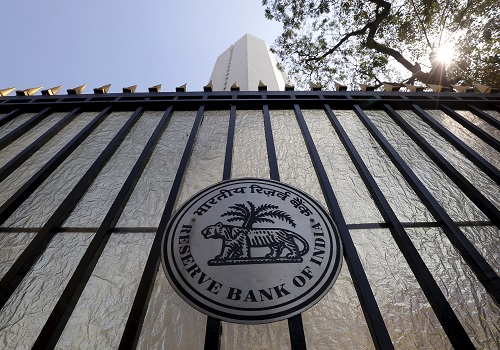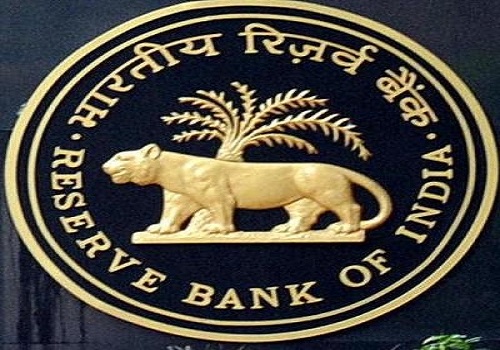Cottoncandy trading range for the day is 56370-57170 - Kedia Advisory

Follow us Now on Telegram ! Get daily 10 - 12 important updates on Business, Finance and Investment. Join our Telegram Channel
Gold
Gold exhibited a marginal gain, closing up by 0.1% at 61,181, as the dollar index remained below 104. Investors were closely analyzing the latest Consumer Price Index (CPI) report while awaiting the Federal Reserve's policy decision scheduled for Wednesday. The US consumer price inflation rate eased to 3.1% in November, the lowest figure in five months, aligning with market expectations. The core rate held steady at an over two-year low of 4%. On a monthly basis, headline inflation inched up by 0.1%, contrary to the market consensus of a flat reading, while the core rate picked up slightly to 0.3%. The Federal Reserve is expected to maintain current interest rates during its December meeting, with investors eagerly searching for hints about potential rate adjustments in the coming year. Despite expectations, the robust labor market might prompt policymakers to adopt a less dovish stance than anticipated by the market. In the physical gold market, Indian dealers increased discounts to seven-month highs to attract customers, countering record local prices that have been dampening demand. Simultaneously, premiums in China, the top consumer, saw a decline. From a technical perspective, the market is undergoing short covering, with a drop in open interest by -1.18% to settle at 14,739. Gold is finding support at 60,995, and a breach below could test 60,815 levels. Resistance is expected at 61,470, and a move above could lead to further testing of 61,765.
Trading Ideas:
* Gold trading range for the day is 60815-61765.
* Gold gains as dollar index remained below 104 as investors digested the latest CPI report
* The US consumer price inflation rate eased to 3.1% in November, marking the lowest figure in five months.
* The robust labor market might prompt policymakers to take a less dovish stance than what market participants anticipate.
Silver
Silver closed unchanged at 71,862 following the release of the US Consumer Prices Index (CPI) report, contributing to a sense of cautious optimism ahead of the Federal Reserve's (Fed) monetary policy decision on Wednesday. While US inflation met market expectations, the monthly CPI remained flat in November, contrasting with the anticipated 0.1% increment. The 3.1% yearly increase in headline inflation and the 4% year-on-year core inflation did not significantly alter the outlook for the upcoming Fed meeting. The central bank is widely expected to keep its benchmark interest rate within the current 5.25%-5.5% band, with attention turning to interest rate projections for the next year and Fed Chairman Jerome Powell's press conference. Investors are keenly watching for dovish hints in Powell's comments that could revive hopes of rate cuts in early 2024, potentially giving a fresh boost to silver prices. The market is currently pricing in a 45% chance of Fed rate cuts in March, with even odds for a rate cut in May, according to the CME Group FedWatch tool. Technically, the market is under fresh selling pressure, with a gain in open interest by 3.9% to settle at 18,670. Silver is finding support at 71,420, and a breach below could test 70,975 levels. Resistance is expected at 72,605, and a move above could lead to further testing of 73,345. The market dynamics are influenced by US inflation data, geopolitical tensions, and anticipation of the Fed's policy stance, creating a cautious trading environment for silver.
Trading Ideas:
* Silver trading range for the day is 70975-73345.
* Silver prices spike up but settled flat after the release of US CPI data
* US Inflation has met the market expectations except for the monthly CPI, which remained flat in November, against the 0.1% increment foreseen by the market.
* All eyes are now on The Fed’s interest rate projections and Chairman Powell’s press conference.
Crude oil
Crude oil experienced a significant decline, closing down by -4.22% at 5717, driven by concerns over ample supply, weakening demand, and skepticism regarding the effectiveness of OPEC+ production cuts in 2024. Despite OPEC+ planning to reduce output by 2.2 million barrels per day in Q1 2024, apprehensions persist about non-OPEC nations potentially increasing supplies significantly. The US Consumer Price Index report, revealing an unexpected uptick in consumer prices between October and November, has pushed back forecasts for a potential rate cut by the Federal Reserve in Q1 2024. The return of Russian supply to the markets, following disruptions caused by severe storms in Black Sea shipments, adds to the concerns about oversupply. Additionally, global oil demand growth is expected to slow in 2024, with OPEC and the International Energy Agency differing on the extent of the slowdown. A recent OPEC+ deal to limit supply also failed to meet market expectations. Both OPEC and the IEA are set to update their forecasts this week. On the production front, US crude production in September reached a new monthly record of 13.24 million barrels per day, with a notable increase in North Dakota, home to the Bakken shale. From a technical perspective, the market is under fresh selling pressure, with a gain in open interest by 9.26% to settle at 14,949. Crude oil is finding support at 5612, and a breach below could test 5508 levels. Resistance is expected at 5914, and a move above could lead to further testing of 6112.
Trading Ideas:
* Crudeoil trading range for the day is 5508-6112.
* Crude oil dropped due to worries about abundant supply and weakening demand.
* Oil outlook looks bleak for 2024 as oversupply is too big to get matched anytime soon.
* Russian supply is hitting the markets again after a brief decline caused by severe storms in the Black Sea shipments.
Natural gas
Natural gas prices retreated, closing down by -1.46% at 196, influenced by ample output and mild weather conditions limiting heating demand. The average gas output in the Lower 48 U.S. states remained high at 108.5 billion cubic feet per day (bcfd) in December, close to the record 108.3 bcfd observed in November. Traders anticipate that the combination of mild weather and near-record output will constrain the amount of gas utilities pull from storage in the coming weeks. The U.S. Energy Information Administration (EIA) reported that the continental United States entered the winter heating season with the most natural gas in storage since 2020. The storage levels are expected to impact market dynamics in the coming months. LSEG forecasted steady U.S. gas demand in the Lower 48, including exports, at 123.8 bcfd for the next week. U.S. energy firms added oil and natural gas rigs for the fourth consecutive week, marking the first time since November 2022, according to Baker Hughes' report. The U.S. is poised to become the world's leading LNG supplier in 2023, surpassing Australia and Qatar, driven by higher global prices and increased demand for U.S. exports due to supply disruptions and sanctions linked to the war in Ukraine. From a technical perspective, the market is under long liquidation, with a drop in open interest by -12.35% to settle at 31,422. Natural gas is finding support at 192.1, and a breach below could test 188.1 levels. Resistance is expected at 203, and a move above could lead to further testing of 209.9.
Trading Ideas:
* Naturalgas trading range for the day is 188.1-209.9.
* Natural gas slid hurt by ample output while mild weather limited heating demand.
* Average gas output in the Lower 48 U.S. states was at 108.5 bcfd so far in December from a record 108.3 bcfd in November.
* Mild weather and near record output should cap the amount of gas utilities pull from storage in coming weeks.
Copper
Copper prices edged up by 0.1%, settling at 714.9, with support from Peru's 1.9% year-on-year increase in copper production in October, totaling 240,097 metric tons. The market also found support amid expectations of tighter supply next year and hopes for additional economic stimulus from China. Refined copper inventories in Shanghai Futures Exchange (SHFE) and China's bonded warehouses collectively decreased from 316,176 tons to 39,342 tons, signaling potential supply constraints. However, China reported the fastest consumer price decline in three years in November, along with deepening factory-gate deflation, indicating rising deflationary pressures amid weak domestic demand. Despite these challenges, mine closures and disruptions have altered the copper supply landscape, prompting analysts to revise down surplus forecasts, which is a positive signal for copper prices. Anglo American's lower production guidance for copper added to the supportive factors. Macquarie revised its copper market surplus forecasts to 100,000 and 287,000 tons for 2024 and 2025, respectively, down from previous estimates. Global copper production for these years is expected to be around 27 million tons. China's copper imports surged by 10.1% month-on-month to 550,565.6 tonnes in November, further reflecting the country's robust demand for copper. From a technical standpoint, the market is undergoing short-covering, with a drop in open interest by -0.86% to settle at 4,620. Copper is finding support at 712.2, and a breach below could test 709.5 levels. Resistance is expected at 717.5, and a move above could lead to further testing of 720.1.
Trading Ideas:
* Copper trading range for the day is 709.5-720.1.
* Copper steadied as Peru's copper production rose 1.9% in October
* Some support seen amid prospect of tighter supply next year and hopes of more economic stimulus from China.
* Combined refined copper inventories in SHFE and China's bonded warehouses dropped to 39,342 tons from 316,176 tons at the end of the first quarter.
Zinc prices rose by 0.51%, settling at 218.25, as the market assessed the health of Chinese and US manufacturing for insights into global demand. Warehouse inventories monitored by the Shanghai Futures Exchange dropped by 30.30% from the previous Friday, providing support to zinc prices. The optimism was fueled by hopes of an economic recovery in China, following stimulus measures from Beijing and an unexpected increase in the Caixin Manufacturing PMI in November. However, upside potential was limited due to mounting global concerns about the impact of surging local Chinese government debt and a deepening property crisis in the world's second-largest economy. Zinc stocks continued to decline, with daily LME data showing net fresh cancellations of warrants at 21,225 tons. Despite this, LME warehouse zinc inventories surged to 226,250 at the end of November, reaching a more-than-two-year high and signaling subdued economic activity. China's major state-owned banks reportedly resumed selling US dollars in the onshore market to bolster the yuan, while Moody's downgraded its outlook on China's government credit rating from stable to negative. The global zinc market shifted to a deficit of 15,400 metric tons in September from a surplus of 28,000 tons in August, according to the International Lead and Zinc Study Group. From a technical perspective, the market is undergoing short-covering, with a drop in open interest by -13% to settle at 3,887. Zinc is finding support at 217.5, and a breach below could test 216.7 levels. Resistance is expected at 219.5, and a move above could lead to further testing of 220.7.
Trading Ideas:
# Zinc trading range for the day is 216.7-220.7.
# Zinc gains as markets continued to assess Chinese and US manufacturing health for insights on global demand.
# Support also seen amid hopes of economic recovery in top consumer China after a set of stimulus measures from Beijing
# The global zinc market swung to a deficit of 15,400 metric tons in September from a surplus of 28,000 tons in August
Aluminium
Aluminium futures showed a modest increase of 0.15%, closing at 194.4, buoyed by expectations of increased economic stimulus in China, the leading consumer of metals. The cash aluminium discount against the three-month contract reached a three-month high of $47 per ton. China's economic indicators reflected concerning signs, with the steepest consumer price decline in three years and deepening factory-gate deflation in November, raising deflationary concerns amid weak domestic demand. Warehouse inventories monitored by the Shanghai Futures Exchange decreased by 8.20%, contributing to market support. Continued production restrictions in China, driven by a winter power shortage and local smelter capacity ceilings, further supported aluminium prices. China's commitment to bolstering the real estate industry and a weakening US dollar also played roles in sustaining aluminium prices, anticipating future monetary policy adjustments by the Federal Reserve. Chinese primary aluminium production in October reached a record monthly high of 3.62 million tons, a 6% increase compared to the same period last year, driven by rising smelter profits and domestic demand. Technically, the market exhibited short covering, with a 4.1% decrease in open interest (settling at 4702) and prices rising by 0.3 rupees. Aluminium finds support at 193.8, with potential testing of 193.1 levels if breached. Resistance is expected at 195.5, and a breakthrough could lead to prices testing 196.5 levels.
Trading Ideas:
# Aluminium trading range for the day is 193.1-196.5.
# Aluminium gains amid hopes of more economic stimulus from top metals consumer China.
# The discount for cash aluminium against the three-month contract reached its three-month high of $47 per ton.
# China’s primary aluminium production totaled 3.62 million tons in October, up by 6%
Cottoncandy futures observed a decrease of -0.35%, settling at 56720, primarily due to reports of pink bollworm infestation affecting cotton crops. The infestation has notably decreased from 30.62% in 2017-18 to 10.80% in 2022-23. Certified cotton stocks available for delivery against contracts dropped significantly to 6,325 bales on December 5th from a two-year high of 87,770 bales on December 1st. Brazilian cotton shipments increased by 12% in November, reaching 253.71 thousand tons, but a 5.5% decline compared to November 2022. Global cotton production is projected to surpass consumption for the second consecutive year, with an anticipated 3.25% growth to 25.4 million metric tons in the 2023-2024 season. The Cotton Association of India (CAI) revised down its production estimate for the current season to 29.4 million bales due to pink bollworm damage in Haryana and significant declines in north Maharashtra attributed to inadequate rainfall. The USDA's November report increased anticipated U.S. production by 273,000 bales, raising global ending stocks by 1.6 million bales. The U.S. cotton balance sheet for 2023/24 shows slightly lower consumption but higher production and ending stocks. Global cotton balance sheets for the same period reflect lower consumption, higher production, and stocks. In the Rajkot spot market, cotton prices closed at 26393.6 Rupees, down by -0.37%. Technically, the market indicates a fresh selling trend with a 2.87% increase in open interest (settling at 179) and prices down by -200 rupees. Cottoncandy finds support at 56540, potentially testing 56370 levels if breached. Resistance is expected at 56940, with a breakthrough possibly leading to prices testing 57170 levels.
Trading Ideas:
* Cottoncandy trading range for the day is 56370-57170.
* Cotton prices dropped after reports infestation of pink bollworm in the cotton crop there has witnessed a decline.
* The infestation has reduced from 30.62 per cent during 2017-18 to 10.80 per cent in 2022-23.
* ICAC projected that global cotton production will likely outpace consumption for the second year in a row.
* In Rajkot, a major spot market, the price ended at 26393.6 Rupees dropped by -0.37 percent.
Turmeric
Turmeric futures experienced a decline of -0.57%, settling at 14306, driven by sluggish buying activities ahead of anticipated stock releases before the new crop season in January 2024. The market faced pressure from improved crop conditions due to favorable weather, raising concerns about potential yield losses. The Turmeric Board's relocation in Telangana by PM Modi added to farmer concerns in Maharashtra. While crop conditions are satisfactory for the upcoming harvest (January to March), downside risks exist due to unpredictable weather. Despite slower buying, limited downside is expected as decreasing supplies and sustained buying activity contribute to price stability. Improved export opportunities offer additional support, with a 25% increase in exports driven by rising demand globally. However, expectations of a 20–25% decline in turmeric seeding, especially in Maharashtra, Tamil Nadu, Andhra Pradesh, and Telangana, indicate shifting farmer priorities. In September 2023, exports dropped by 19.75% compared to August and by 35.06% compared to September 2022. The drop is attributed to changing dynamics in turmeric cultivation and export patterns. In the major spot market of Nizamabad, the price closed at 13198.85 Rupees, marking a gain of 0.7%. Technically, the market exhibits a fresh selling trend, with a 6.9% increase in open interest (settling at 9915) and prices down by -82 rupees. Turmeric finds support at 14138, with potential testing of 13972 levels if this is breached. Resistance is expected at 14460, and a breakthrough could lead to prices testing 14616 levels.
Trading Ideas:
* Turmeric trading range for the day is 13972-14616.
* Turmeric dropped as buying activities has been slower in expectation of release of stocks
* In Sep 2023 around 9,085.81 tonnes exported as against 11,322.58 tonnes in Aug 2023 showing a drop of 19.75%.
* Expectations for a 20–25 percent decline in turmeric seeding this year
* In Nizamabad, a major spot market, the price ended at 13198.85 Rupees gained by 0.7 percent.
Jeera
Jeera futures experienced a marginal decline of -0.55%, settling at 36445, attributed to farmers actively engaging in cumin sowing. Notably, there's a substantial surge in cumin cultivation in Gujarat, marking a 94% increase in sown hectares compared to the previous year. Rajasthan also witnessed a 13% rise in cumin cultivation. This heightened production, however, led to a global decline in demand for Indian jeera, as buyers favored alternative sources like Syria and Turkey due to competitive pricing. In September 2023 alone, jeera exports witnessed an 11.02% decrease compared to August 2023 and a substantial 60.27% drop compared to September 2022. The competitive pricing of Indian jeera in the global market did not translate into increased demand, contributing to subdued export activities in the foreseeable future. On the domestic front, the spot market in Unjha closed at 38302.25 Rupees, showing a modest gain of 0.43%. However, the overall price competitiveness of Indian jeera in the international market seems to be affecting the export prospects adversely. The subdued export activity is expected to persist in the coming weeks, aligning with seasonal trends. From a technical standpoint, the market indicates a fresh selling trend. Open interest has increased by 10.41%, settling at 3501, while prices have witnessed a decline of -200 rupees. The support level for Jeera is identified at 35500, and a breach below may lead to a test of 34540 levels. Conversely, resistance is anticipated at 37100, and a breakthrough could propel prices to test 37740 levels.
Trading Ideas:
* Jeera trading range for the day is 34540-37740.
* Jeera prices gained on short covering after prices dropped as farmers insisted on sowing cumin.
* An increase in sowing of about 13 percent has been recorded in the area of cumin in Rajasthan.
* Stockists are showing interest in buying on recent downfall in prices triggering short covering.
* In Unjha, a major spot market, the price ended at 38302.25 Rupees gained by 0.43 percent.












 320-x-100_uti_gold.jpg" alt="Advertisement">
320-x-100_uti_gold.jpg" alt="Advertisement">









